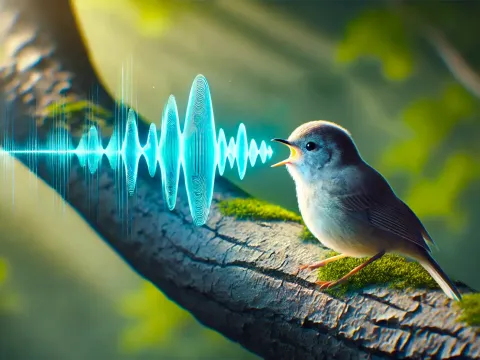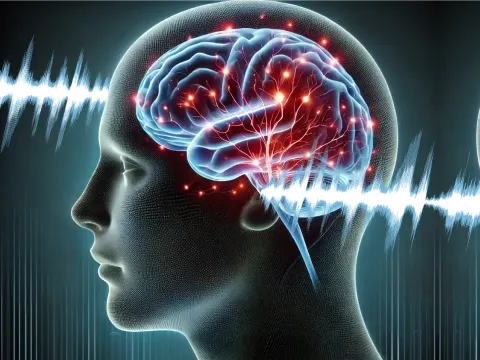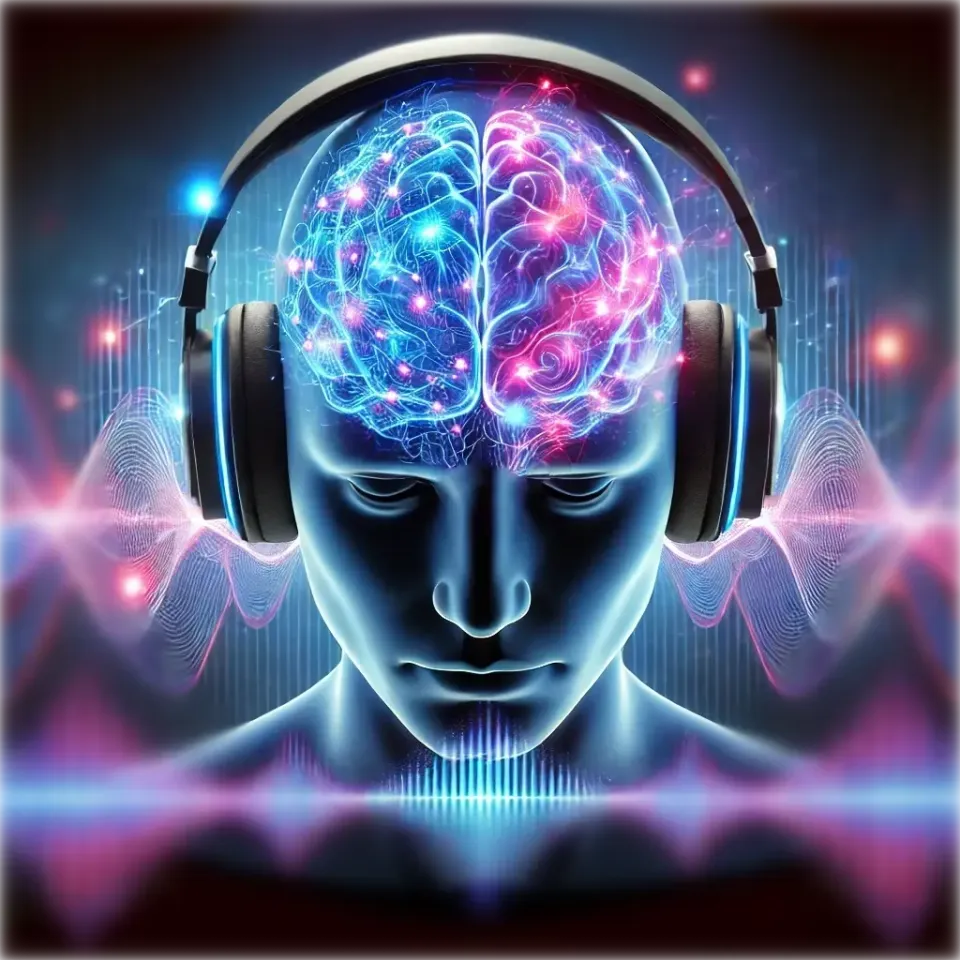What is sound? How do people hear sound?
Learn what sound is and how people hear it. Simple explanations with examples and pictures.
What is sound?

Birdsong: sound waves created by the vibration of vocal cords
We live in a world full of sounds: we hear beautiful music, the voices of people we love, and many different noises. But there are also many sounds around us that we do not hear, because our hearing organs cannot catch all types of sounds. So, what is sound? Why do we hear some sounds but not others? How does sound appear, and how do we hear it?
No air – no sound

Air molecules fill all the space around us; without them, sound would not exist
Sound depends on air. Even if we think the space around us is empty, it is actually filled with air. Air is made of tiny gas molecules. We cannot see them, but without them, we could not live for even a few minutes. According to the College of Earth and Mineral Sciences, one cubic centimeter of air contains several quintillion gas molecules (1019).
Also, if there was no air, there would be no sound. In empty space, called a vacuum, there is no sound.
Sound can travel not only through air, but also through liquids and even solid things. For example, sound travels about three times faster in water than in air. In this article, we will talk about how sound appears and moves in the air.
How does sound appear?
For sound to happen, something needs to start vibrating (shaking back and forth). For example, the speaker in a music player, a car’s exhaust pipe, a person’s vocal cords, or a guitar string. When something vibrates, it pushes the air molecules next to it and moves them.

Sound waves spread in all directions from the source of the sound

Vibration of a guitar string and the emergence of a sound wave
The air particles start moving back and forth. They pass this movement to the next particles nearby, and those pass it on to others. This creates a wave of moving air particles that spreads out from the vibrating object in all directions. This wave is called a sound wave.
Sound is invisible waves that happen in the air when something vibrates or shakes.
EXAMPLE. Imagine a lake on a calm day. A boy standing on the shore throws a stone into the water. The stone makes waves that spread out across the water and reach the shore. The space around us is like this lake, but instead of water, it is filled with air. When something vibrates in this space, like a guitar string, waves also appear in the air. We cannot see these waves, but we can hear them.

Sound waves from playing a musical instrument are similar to waves on the surface of water

Waves on the surface of the lake from a stone thrown into the water
How do people hear sound?
The back-and-forth movement of air reaches a person who is in the path of the sound wave. The human ear picks up these movements of air, notices their features, and sends this information to the brain. The brain processes this information and creates our personal understanding of what we are hearing. So, some sounds seem to us like noise, others like music or speech.
Daniel Levitin, a psychologist and brain scientist, wrote in his book "This Is Your Brain on Music" that loudness and pitch (how high or low a sound is) are completely psychological things. This means they do not really exist outside our minds—they are created by our perception.

Sound is not only a physical phenomenon (acoustic waves), but also a psychophysiological process.
So, sound is not only a physical thing (waves in the air), but also a process in our body and mind. Our ears pick up the waves and send information to the brain, and the brain turns it into something meaningful that can make us feel different emotions. A psychophysiological process means that both our body (ears and brain) and our mind (thoughts and feelings) work together when we hear something.
The sound we hear is the result of our ears and brain working together to understand information about sound waves. This gives meaning and emotion to what we hear.
When we define sound, it is important to think about how we experience it. What we call "sound" in our minds is different from what scientists call "sound" as a physical event. If we do not hear anything, we say "it is silent" or "there is no sound." But sometimes sound exists even if we cannot hear it—our ears only pick up certain types of sounds. You can read more about how our ears work and how we hear in another article on our website.
Main properties of sound
Sound has different physical features that our ears can notice and send to our brain. Besides just noticing these features, our brain also compares them over time and with memories of other sounds. Let’s look at what features a sound wave has and how our brain understands them.
The next table (Table 1) shows the main properties of sound, how we measure them, what range people can hear, and how our brain understands them.
Table 1. Main properties of sound and how people hear them
| Physical property | How people hear it | Measurement | Range people can hear |
|---|---|---|---|
| Frequency of vibrations, length of sound wave | Pitch (high or low) | Hertz (Hz) | From 20 Hz to 20 kHz |
| Frequency spectrum | Timbre (sound color) | - | - |
| Amplitude of vibrations, sound pressure | Loudness | Pascals (Pa), Decibels (dB) | From 0 to 120 dB |
| Speed of sound | When you start to hear it | Meters per second (m/s) | - |
| Duration | Smoothness or breaks in sound | Seconds | - |
| Reverberation (echo) | Where the sound comes from, echo effect | - | - |
You can learn more about each property of sound and how people hear them in other articles on our website.
Conclusion
Sound is not just a physical thing that happens when objects vibrate and make air move. Sound is part of how we experience the world every day. It happens all around us all the time but becomes important when it reaches our ears and our brain notices it. For people, sound is not just vibrations—it helps us talk to each other, share feelings, and enjoy music.
Our experience of sound is personal: the same sounds can feel different depending on where we are, our mood, health, or other reasons. We do not just hear sounds—we feel them, think about them, and give them meaning. That is why sound is so important in culture, art, and life itself.
Information sources
- Study on the sounds of blue whales, Journal of the Acoustical Society of America
- Technical Manual on the Impact of Noise on Humans, U.S. Federal Labor Agency
- App for determining sound level, National Institute for Occupational Safety and Health, USA
- The book "Sound: Listening, Hearing, Observing" by Michel Chion
- The book "On Music. The Science of Human Obsession with Sound", by Daniel Levitin
- College of Earth and Mineral Sciences: Molecular Dynamics of Air
- RBR Manufacturer of Oceanographic Instruments: All About the Speed of Sound in Water
Author team instrumental-music.eu
Last updated:

What is sound? A physical phenomenon and its amazing perception by the human brain